Honda Jazz vs Volvo EC40 – Differences & prices compared
Compare performance, boot space, consumption and price in one view.
Find out now: which car is the better choice for you – Honda Jazz or Volvo EC40?
The Honda Jazz (Hatchback) comes with a Full Hybrid engine and Automatic transmission. In comparison, the Volvo EC40 (SUV) features a Electric engine with Automatic transmission.
When it comes to boot capacity, the Honda Jazz offers 304 L, while the Volvo EC40 provides 404 L – depending on how much space you need. If you’re looking for more power, decide whether the 122 HP of the Honda Jazz or the 442 HP of the Volvo EC40 suits your needs better.
In terms of consumption, the values are 4.50 L per 100 km for the Honda Jazz, and 16.20 kWh for the Volvo EC40.
Price-wise, the Honda Jazz starts at 23100 £, while the Volvo EC40 is available from 46600 £. Compare all the details and find out which model fits your lifestyle best!
Honda Jazz
The Honda Jazz stands out in the compact car category with its intelligently designed interior, offering a surprisingly spacious cabin that comfortably accommodates passengers and luggage. Its efficient hybrid powertrain ensures a smooth and economical driving experience, ideal for both urban commutes and longer journeys. Furthermore, the Jazz is equipped with a range of advanced safety features, providing peace of mind while on the road.
details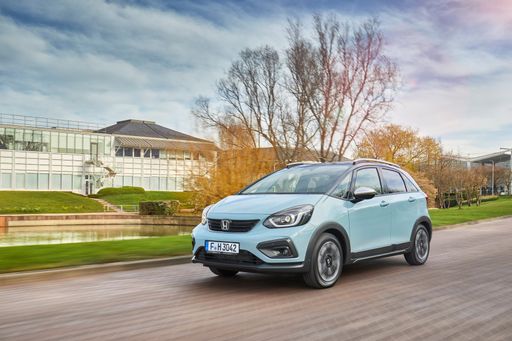 @ hondanews.eu
@ hondanews.eu
 @ hondanews.eu
@ hondanews.eu
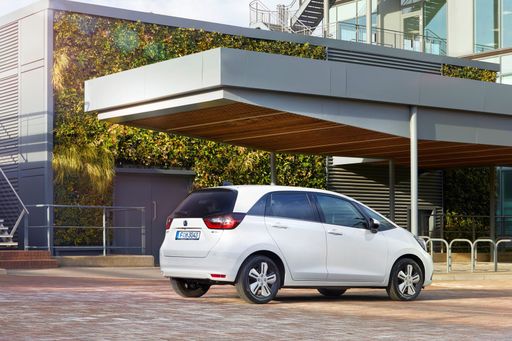 @ hondanews.eu
@ hondanews.eu
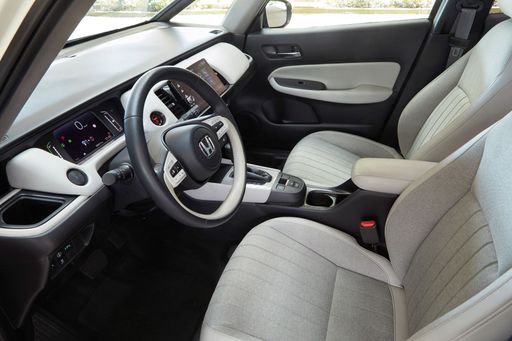 @ hondanews.eu
@ hondanews.eu
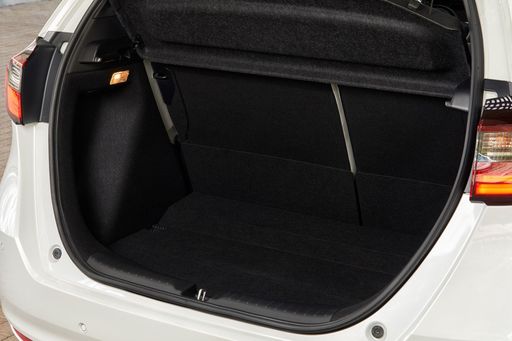 @ hondanews.eu
@ hondanews.eu
Volvo EC40
The Volvo EC40 seamlessly combines cutting-edge technology with sleek Scandinavian design, offering a refined driving experience. With its advanced safety features and user-friendly infotainment system, this model caters to both seasoned drivers and modern tech enthusiasts. The vehicle's impressive efficiency and environmentally conscious engineering make it a standout choice for those seeking sustainability without compromising on style.
details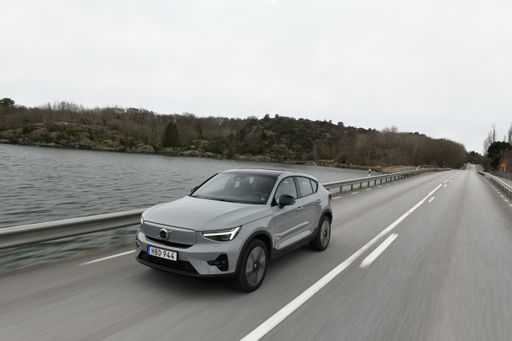 @ media.volvocars.com
@ media.volvocars.com

|

|
|
|
|
Costs and Consumption |
|
|---|---|
|
Price
23100 - 26700 £
|
Price
46600 - 59000 £
|
|
Consumption L/100km
4.5 - 4.8 L
|
Consumption L/100km
-
|
|
Consumption kWh/100km
-
|
Consumption kWh/100km
16.2 - 17.3 kWh
|
|
Electric Range
-
|
Electric Range
488 - 584 km
|
|
Battery Capacity
-
|
Battery Capacity
67 - 79 kWh
|
|
co2
102 - 108 g/km
|
co2
0 g/km
|
|
Fuel tank capacity
40 L
|
Fuel tank capacity
-
|
Dimensions and Body |
|
|---|---|
|
Body Type
Hatchback
|
Body Type
SUV
|
|
Seats
5
|
Seats
5
|
|
Doors
5
|
Doors
5
|
|
Curb weight
1302 - 1320 kg
|
Curb weight
2065 - 2185 kg
|
|
Trunk capacity
304 L
|
Trunk capacity
404 L
|
|
Length
4089 - 4105 mm
|
Length
4440 mm
|
|
Width
-
|
Width
1873 mm
|
|
Height
1526 - 1556 mm
|
Height
1591 mm
|
|
Payload
370 - 388 kg
|
Payload
395 - 435 kg
|
Engine and Performance |
|
|---|---|
|
Engine Type
Full Hybrid
|
Engine Type
Electric
|
|
Transmission
Automatic
|
Transmission
Automatic
|
|
Transmission Detail
CVT
|
Transmission Detail
Reduction Gearbox
|
|
Drive Type
Front-Wheel Drive
|
Drive Type
Rear-Wheel Drive, All-Wheel Drive
|
|
Power HP
122 HP
|
Power HP
238 - 442 HP
|
|
Acceleration 0-100km/h
9.4 - 9.7 s
|
Acceleration 0-100km/h
4.6 - 7.3 s
|
|
Max Speed
175 km/h
|
Max Speed
180 km/h
|
|
Torque
253 Nm
|
Torque
420 - 670 Nm
|
|
Number of Cylinders
4
|
Number of Cylinders
-
|
|
Power kW
90 kW
|
Power kW
175 - 325 kW
|
|
Engine capacity
1498 cm3
|
Engine capacity
-
|
General |
|
|---|---|
|
Model Year
2023
|
Model Year
2024
|
|
CO2 Efficiency Class
C
|
CO2 Efficiency Class
A
|
|
Brand
Honda
|
Brand
Volvo
|
Honda Jazz
The Evolution of the Honda Jazz: A Modern Marvel in Compact Design
The Honda Jazz, known for its compact yet spacious design, continues to impress with its blend of practicality and innovation. Today, we delve into the technical details and innovations that make the latest models of the Honda Jazz stand out in the competitive auto market.
Hybrid Powertrain: Efficiency and Performance
The Honda Jazz is equipped with a cutting-edge 1.5 i-MMD e:HEV full hybrid engine, delivering an impressive 122 PS, or 90 kW. This powertrain seamlessly balances efficiency and performance, achieving a fuel consumption of 4.5 to 4.8 L/100km. Whether navigating the city streets or taking on longer journeys, the Jazz provides a responsive and smooth driving experience, accentuated by its CVT automatic transmission.
Sleek Design with Smart Storage Solutions
Staying true to its roots, the Honda Jazz maintains a compact exterior with dimensions ranging from 4089 to 4105 mm in length and 1526 to 1556 mm in height. Despite its size, the Jazz offers ample luggage capacity of 304 litres, thanks to the intelligent Magic Seat system that allows for flexible storage configurations. The combination of a sleek design with practical storage makes the Jazz an ideal city companion.
Advanced Technology and Comfort
The Honda Jazz doesn’t stop at efficiency; it also comes packed with a plethora of technological features. As part of its high-tech package, the Jazz includes a state-of-the-art infotainment system and various driving assistance technologies, enhancing both safety and comfort. Families and commuters alike will appreciate the thoughtfully designed interior, seating up to five passengers with ease.
Performance and Handling Dynamics
The driving experience of the Honda Jazz is primarily characterised by its lively handling and assured grip thanks to its front-wheel-drive configuration. With a torque of 253 Nm and a 0-100 km/h acceleration between 9.4 to 9.7 seconds, the Jazz offers adequate performance for everyday urban driving. The maximum speed reaches 175 km/h, ensuring the Jazz can hold its own on motorways too.
Environmental Responsibility and Cost Efficiency
In an era of heightened environmental awareness, the Honda Jazz stands out with a CO2 emission range of 102 to 108 g/km, adhering to the CO2 Efficiency Class C. Cost-conscious consumers will appreciate the Jazz's low running costs, with potential expenses ranging from €812 to €877 per month and a cost per kilometre of 32.5 to 35.1 cents.
Conclusion: A Comprehensive Package
Combining innovation, economy, and style, the Honda Jazz serves as a testament to Honda's commitment to evolving their compact range to meet the modern driver's needs. For those seeking a reliable, efficient, and technologically advanced vehicle, the Honda Jazz stands ready to elevate their driving experience.
Volvo EC40
Introduction to the Volvo EC40
The Volvo EC40 has emerged as a standout model in the electric SUV market, embodying a splendid fusion of Scandinavian design and state-of-the-art technology. As part of Volvo’s endeavour towards a sustainable future, the EC40 caters to environmentally conscious drivers who seek a blend of performance, luxury, and innovation.
Powertrain and Performance
The Volvo EC40 is available in both rear-wheel and all-wheel drive configurations, offering a flexible choice for various driving preferences. The model is powered by robust electric motors, with outputs ranging from 238 to 408 PS (175 to 325 kW). This range of power allows for a diverse driving experience, featuring a brisk acceleration from 0 to 100 km/h between 4.6 and 7.3 seconds, appealing to enthusiasts of spirited driving.
Fuel efficiency is a significant advantage of the EC40, boasting a consumption between 16.2 and 17.3 kWh per 100 km. Moreover, the vehicle's electric range impresses with figures stretching from 487 to 584 km, ensuring that long drives are as feasible as they are economical.
Innovative Battery Technology
Equipped with high-capacity batteries ranging from 67 to 79 kWh, the Volvo EC40 leverages advanced battery technology to offer reliability and longevity. This innovation helps in maintaining exceptional energy efficiency while adhering to Volvo’s commitment to reducing environmental impact.
Design and Dimensions
The signature Scandinavian design of the EC40 embodies elegance through its simplistic yet luxurious aesthetics. Its dimensions — 4440 mm in length, 1873 mm in width, and 1591 mm in height — are crafted to provide optimal space and comfort without compromising sleekness. The interior accommodates up to five passengers comfortably, with a boot offering a 404-litre capacity, making it ideal for adventure trips or daily commutes.
Safety and Technology
Volvo has long been synonymous with safety, and the EC40 continues this legacy with an array of advanced safety and driver assistance technologies. The SUV is equipped with cutting-edge features such as automated emergency braking, lane-keeping assistance, and BLIS (Blind Spot Information System), designed to ensure a stress-free and secure driving experience.
Conclusion
The Volvo EC40 stands as a testament to Volvo's dedication to innovation in the automotive industry. With an excellent blend of performance, technology, and efficiency, alongside impressive environmental credentials — including a CO2 efficiency class of A and zero emissions — the EC40 represents a beacon of Volvo’s sustainable future in electric mobility.
Is the Honda Jazz offered with different drivetrains?
The Honda Jazz is available as Front-Wheel Drive.
The prices and data displayed are estimates based on German list prices and may vary by country. This information is not legally binding.
